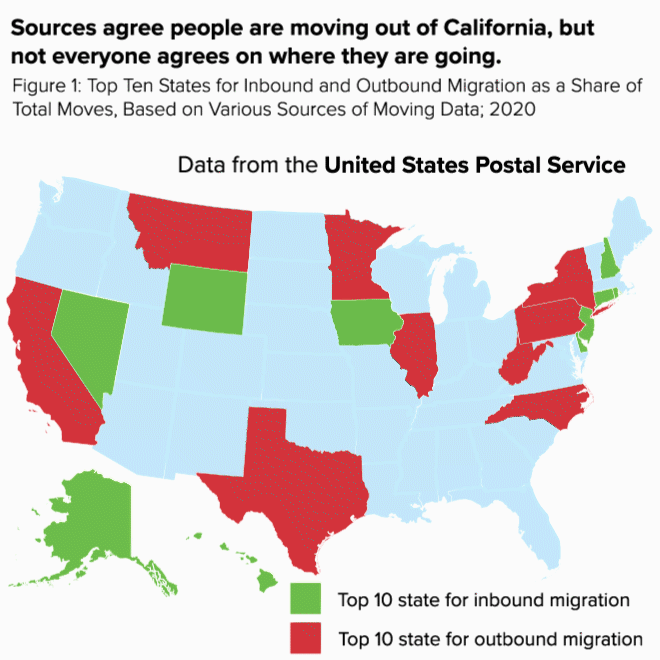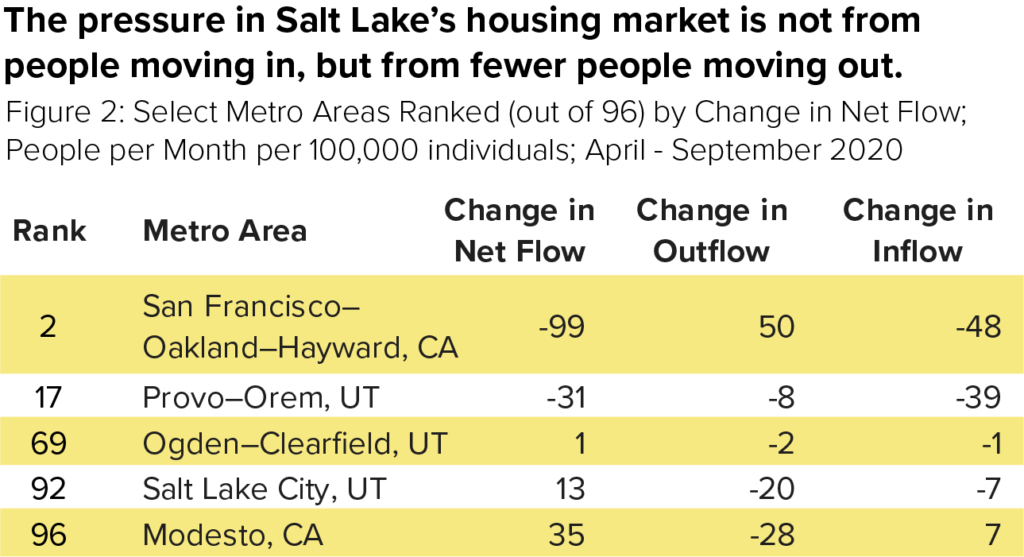The Utah Foundation has released a series of Significant Statistics on the relative importance of housing affordability among Utah voters, noting the steep increases in housing prices and rental prices.
Why are we seeing these increases? The Utah Foundation has looked at whether it might be due to an influx of Californians. That does not seem to be the whole answer. When looking at Utah’s larger metropolitan areas, the recent rate of people moving in is actually down. The recent increase in demand is actually due in part to fewer residents than normal leaving – particularly in the Salt Lake area – thus pushing up housing costs and rent.
Some have put the blame for the increase on California, claiming that residents of its large urban areas are now freed through the increase in remote work and are looking to move to other areas with a lower cost of living such as Idaho and Utah – thereby increasing housing demand and prices. However, an analysis of USPS change-of-address data indicates that Nevada, Arizona and New Mexico are the top states for inbound migration in the region. An analysis of data from the moving-company United indicates Oregon, Idaho and Arizona were the stop target states in the region. On the other hand, another moving-company, Atlas, includes Utah along with Idaho and Nevada as the primary targets for western states.
Nonetheless, Utah is not among the top 10 states for inflow among any of these measurements. (See Figure 1.) If Utah had been a top destination for Americans, it could help explain the rising housing prices and rental prices mentioned in previous posts. However, Utah was far exceeded by some of its neighbors.

Source: Realtors using USPS change-of-address, United using their out-of-state moving data, and the Tax Foundation using out of state moving data from Atlas.

Note: Change in net flow is change in inflow subtracted by change in outflow.
Since previous Utah Foundation surveys indicated that the Salt Lake Metro area has a high level of concern regarding housing affordability, Utah Foundation looked to studies focused on migration patterns across metropolitan areas. A study by the Federal Reserve Bank of Cleveland (based on consumer credit information) found that among the 96 largest metropolitan areas in 2020, most lost population. For instance, in the San Francisco Bay area, the net change has favored smaller metropolitan areas in California. However, for the most part, rather than a mass movement out of large cities, the lost was more related to a decreased inflow among large metros. (See Figure 2.)
The Provo-Orem metro area was a prime example of this trend, with the 17th highest net decrease out of nearly 100 large metro areas (with over half a million people). The area saw a net decrease of 31 people per 100,000 people, largely driven by 39 fewer people per 100,000 moving into the metro area.
The Ogden-Clearfield area had inflows and outflows similar to past years.
The Salt Lake metro area bucked the national trend. It saw the fifth highest growth per 100,000 people out of nearly 100 cities. But is it Californians driving that growth? Not likely. During 2020, fewer people actually moved into the Salt Lake metro when compared to past years. Most of that population growth is linked to fewer people leaving (20 people per 100,000 people). And fewer people leaving is functionally equivalent to more people coming in.
So, it turns out that for 2020, Salt Lake metro residents are to blame (at least in part) for rising housing and rental prices because they have not moved out at a similar pace as in previous years.
Categories:

